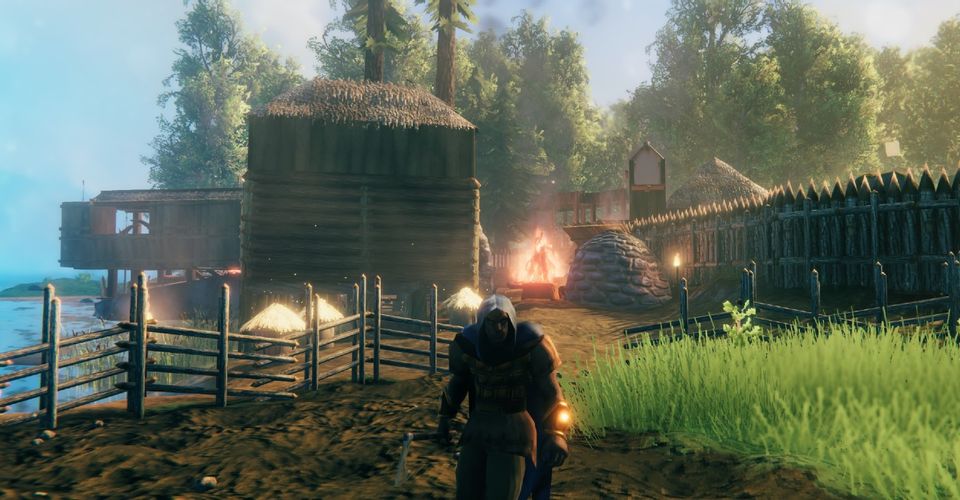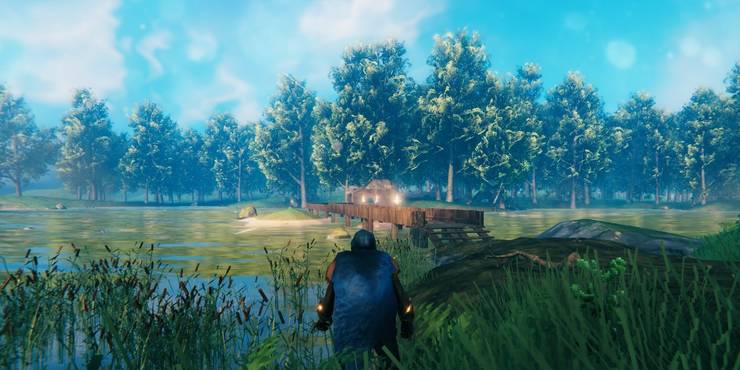Valheim Home Building Is Great, But You Need To Know When To Move On

The survival game Valheim has skyrocketed in popularity since its Early Access release earlier this year, and now over five million people are playing Valheim and discovering the joy of crafting and battling in the Viking afterlife. The world of Valheim is massive, however, and while players may grow attached to the safety of the Meadows biome that they start in, eventually they will have to venture into much more dangerous territory.
In Valheim, players must travel through multiple biomes in order to gain the resources and skills necessary to take down the game’s five bosses. Valheim’s different biomes range from the frigid mountains to the deadly Swamps and Plains, and all of them will present players with different kinds of enemies, environmental hazards, and obtainable treasures. What they all will have in common, however, is that they will likely all be located far away from the player’s home base.
Valheim has a fantastic crafting and building mechanic which feels ripped straight from Fallout 4, and players can easily spend hours upon hours ignoring the overall plot and simply working on making the best Valheim settlement possible. While the game ultimately encourages this freedom – evidenced by the fact that not fighting, eating, or sleeping never actually kills players in Valheim but only lowers their stamina somewhat, a stat not needed for building – it’s important to remember that there IS an end goal in Valheim, and players who want to actually reach it will need to pack up and move on eventually.
Valheim Walkthrough: When It’s Time To Move

While Valheim players can eventually easily craft portals which let them teleport from place to place instantly, certain important items – namely ore and ingots, be they copper, tin, or iron – can’t be carried through. Ore and ingots are needed to craft a variety of items, weapons, and armor sets in Valheim, and they are also incredibly heavy, which means players can’t carry a lot of them on their person. Sure, players can craft roads and bridges and attach a cart to themselves in order to transport large quantities of ore across Valheim’s map, but eventually they will want to build a closer forge.
Because of the way Valheim’s workbenches and forges upgrade, and because of how enemies scale across Valheim’s different biomes, this isn’t as simple as just bringing the items needed and setting up a small workstation. Both forges and workstations need multiple additional items to be used to their full potential, and furnaces require coal, which (unless players want to constantly burn their food over and over again) requires a smelter. All of this becomes a fairly hefty investment, and should be properly protected from Valheim’s Trolls, Skeletons, Greydwarf Brutes, Draugr, or any other enemies who could come by. This means the player needs a fence, or a moat, or a spiked wall – something to keep the monsters away from their new Valheim settlement and crafting area.
All of this quickly adds up and can become a large undertaking. While it’s nice to have one main base in Valheim which can constantly be improved or added onto, it’s also important to know when it’s time to load all of the resources up in a cart and move on to a different location. Everyone’s map in Valheim is different thanks to the game’s procedural generation, but all of them contain dangerous biomes filled with much-needed loot and much deadlier enemies. Players can likely get away with staying home and venturing out to the Black Forest, but once they begin to make regular trips to the Swamp, the Mountains, or the Plains, it’s time to move that base a little closer, lest they risk setting themselves up for hours and hours of sailing just to bring iron back to the furnace in Valheim.
About The Author


















